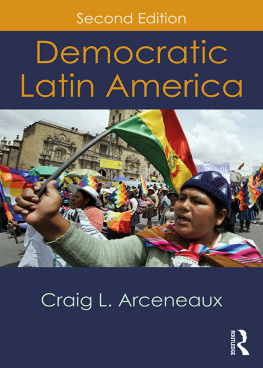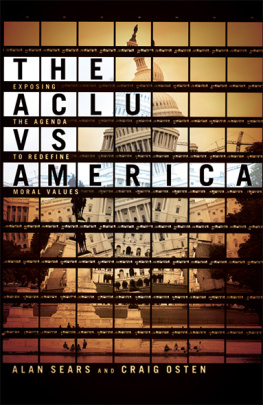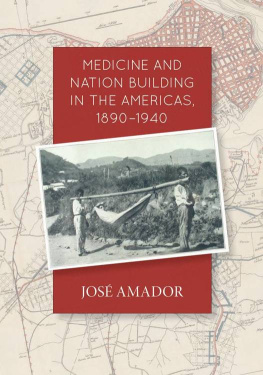1989 The University of North Carolina Press
All rights reserved
Manufactured in the United States of America
The paper in this book meets the guidelines for permanence and durability of the Committee on Production Guidelines for Book Longevity of the Council on Library Resources.
93 92 91 5 4 3 2
Library of Congress Cataloging-in-Publication Data
Roell, Craig H.
The piano in America, 1890-1940 / by Craig H. Roell.
p. cm.
Bibliography: p.
Includes index.
ISBN 0-8078-1802-X (alk. paper)
ISBN 0-8078-4322-9 (pbk.: alk. paper)
1. PianoMarketing. 2. ConsumersUnited States. 3. Music and society. I. Title.
ML661.R64 1989
381.4568181621dc 19
88-14326
CIP
MN
THIS BOOK WAS DIGITALLY MANUFACTURED.
Preface
There is probably no country in the world where piano playing is so widespread as in the United States, Louis C. Elson wrote at the turn of the century in History of American Music (1904). Almost every home, even among the humble, possesses its instrument and some amount of piano music.... The universal gift or habit of playing the piano, or playing at piano music, in America is undeniable.
This popularity was expressed even in slang. One could soft pedal a suggestion, use a forum as a sounding board for ideas. Ivory thumpers could tickle the ivories when playing the instrument. The steam calliope was also known as the horse piano. In the period before the First World War, to play the piano could mean to be fingerprinted, while during the Second World War, the phrase described the release of bombs from a plane one by one. In some restaurants piano signified spareribs, because the bones resembled piano keys. Similarly were dominoes and horses teeth called piano keys. The railroad industry referred to the control box that operated track switches as a piano box. The difficulty and pain associated with traditional piano lessons most likely helped to coin piano bench to mean a convicts workbench. The pianos association with domesticity and women is echoed in the late-nineteenth-century phrase playing the piano, or playin the pianner, which described the shifting of rows of mineral-water bottles by women workers from a ships hold into baskets that were then hauled onto the wharf by cranes, and it was hardly a compliment for a woman to be called piano legs. Neither was it praise when Victorian men were considered rather too piano, implying that they were effeminatetoo gentle, weak, and mild.
When player pianos became popular, card players described a hand that was easy to play or required no skill as a pianola (originally a trademark of the Aeolian Company of New York). The expression also meant cash register, no doubt because the coinoperated player piano enjoyed a lucrative market, but to give a pianolaed performance was to render without life or emotion as if automated. Even the coining of Chicago piano to mean the submachine guns used by gangsters in the 1920s, especially in Chicago, is derived from the expressionless rat-a-tat performance of many player pianos.
Before the advent of radio and the high-fidelity phonograph, the piano not only spread music appreciation; it added to the prestige of the home. It symbolized the middle-class values of the Victorian agethe treasured canons of the work ethic, the morality of music, and domesticity. The piano and music industries became a big business in an age that, with the exception of an occasional barrel-operated music box or dulcimer, knew only live music and whose entire value system was based on work, sacrifice, and saving. The strenuous life was a survival technique elevated to a virtue. As industry and society mechanized and electrified, however, and workers in the twentieth century labored for fewer hours per week, work and sacrifice became less valued in a culture that increasingly honored leisure, recreation, and consumption.
The quickened tempo and increased leisure time of today have brought with them a gradual change of tastes, and have expanded enormously the number of ways of satisfying the urge for recreation, Julius Weinberger wrote in the Harvard Business Review for 1937. He estimated that Americans were spending more than one-sixth of their incomes available after the purchase of living necessities on recreation, most of this on what may be called passive recreation, in which the participants were spectators and listeners exerting little physical energy. Passivity did not eclipse active participation in modern society, however; consumers could be active workers and shoppers, or passive recipients of persuasive advertising and mechanized production. But work became more important and meaningful as a means of buying products, rather than providing an opportunity for self-expression or imparting a sense of accomplishment, independence, and moral fulfillment. Mechanical production eased labor, encouraged consumption, promoted obsolescence, and created dependency.
We Americans are mercurial and changeable, and forever craving something new, declared another writer in 1932 about the related phenomenon of mechanically reproduced music. The canned music generated by the player piano, phonograph, radio, and talkies, has become a craze exceeding any movement of the kind in the entire history of music. Indeed, these devices brought music into the homes and lives of millions who had never enjoyed it because they lacked the ability or desire to work at learning to produce tunes by hand. On the other hand, these inventions also uniquely affected the industry whose financial and social foundation was rooted in active participation.
By the 1920s this consumer culture had emerged as the dominant ethic, despite a deceptive (though not necessarily feigned) devotion to Victorian values. This was the conflict of the Progressive Era. Bureaucratic government and big business (with its professional managers, mass production and distribution, and national advertising) threatened local government and small businessmen. Urban life was seen as a danger to rural values. Peer groups and outside interests became more influential than home and family life. Womens liberation challenged tradition and caused social upheaval. Mechanization jepardized the pride and satisfaction of production by hand. Purchase by credit and the limitless variety of products for sale eroded the old reverence for thrift. The new consumer bought more than products and services; he consumed a new ideology, a new imagebut one that was peculiarly destructive. The expenditure, waste, dependency, and deliberate obsolescence created by consumerism were both exciting and discomforting. The values of the waning age seemed to offer solace and stability.
This study examines the transition from the nineteenth-century Victorian to the twentieth-century consumer culture through a focus on the American piano industry from 1890 to 1940. This transition involves the examination of a number of interrelated themes: the erosion of the home as the center of family life; the transformation of the population from producers to consumers following the rise of industrialization; the impact of mechanization upon self-expression and production in the home; the rise of mass media, manipulative advertising strategies, and the democratization of public taste; and the development of a consumer culture, with its emphasis on leisure, recreation, and fulfillment through consumption. The piano and its industry linked music, technology, business, politics, and society, and therefore are particularly suited to providing a better understanding of the transition to the modern world.





![Jeansonne - A Time of Paradox America Since 1890 [inc VOL 1-2]](/uploads/posts/book/204167/thumbs/jeansonne-a-time-of-paradox-america-since-1890.jpg)


